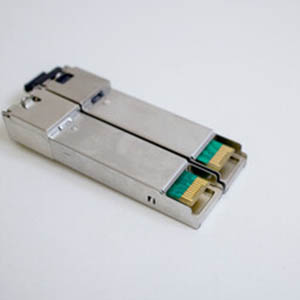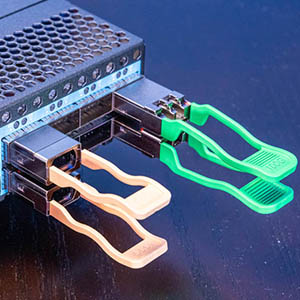Small form-factor pluggable (SFP) transceivers are a fundamental technology in many networks, facilitating communication between switches and critical network components. SFPs are favored for their compact size, diverse connection options (copper or fiber optic), and their ability to be hot-swapped, making them a versatile choice in network design.

SFP Modules, also known as mini-GBIC (gigabit interface converter), is designed to be compact enough for use in space-constrained networking environments while powerful enough to provide rapid communication between switches and other essential networking equipment. They are perfect for expanding or adjusting existing networks without the need for a complete redesign of the cable infrastructure.
Types of SFP Modules
SFP is engineered to integrate with the majority of modern networks. For copper connections, you will primarily encounter 1000BASE-T and 1000BASE-TX modules for gigabit Ethernet networking. These SFP modules excel at bridging communications between switches in compact settings, provided the distance does not exceed 100 meters.
For fiber optic connections, the options are vast. SFP modules support both singlemode and multimode fibers, operating in simplex and duplex configurations. Wavelength options range from 850 nm to 1550 nm, with networking ranges extending from approximately 500 meters to over 100 kilometers. There is an SFP module tailored for every requirement.
SFP Compatibility
SFP compatibility can be a complex issue. There is no formal, regulated international standard for these modules; instead, compatibility is governed by the multi-source agreement (MSA). This agreement is supported by numerous manufacturers who collaborate to ensure a reliable method of intermixing and matching SFP brands.
Despite the MSA, SFP modules generally perform best when the same brand is used throughout, which can present challenges when aiming to optimize equipment costs. You can either adhere to MSA guidelines and attempt to use cost-effective parts in different parts of your network or opt for a single brand to simplify compatibility. The trade-off typically lies between equipment costs and deployment time, but overall, MSA compatibility can be effectively utilized in most networks.
Applications of SFP Modules
What are SFP modules used for?
Copper modules are most commonly used for bridging network switches, providing fast copper connections without the need for bulky equipment.
Fiber optic applications encompass any scenario that involves high-speed and/or long-range cables. High-definition audio transmission and reception, passive optical networks (PON), and multiplexing and simplex networking are among the most prevalent uses of this technology. The variety of SFP modules cater to these connections, offering a spectrum of options in terms of cost, speed, range, and accessibility.
Advanced SFP Developments
Since the inception of SFP, several modern advancements have been introduced. SFP+ and QSFP are now available, offering enhanced capabilities. SFP+ is a faster variant of the same form factor, supporting speeds up to 10Gbps and typically operating over shorter distances. SFP+ ports are generally compatible with SFP optics, but not vice versa; SFP+ cannot operate at speeds slower than 1Gbps.
QSFP (quad small form-factor pluggable) is another transceiver with a broad range of support options, including Ethernet, InfiniBand, SONET, and fiber channels. The primary distinction between QSFP and SFP is the quad form factor. QSFP can achieve speeds up to 100 Gbps by utilizing four transmission and reception channels, making it a powerful upgrade for systems that demand substantial bandwidth.
For those new to SFPs, it is crucial to understand how frequently SFP modules can facilitate communication between devices. The key is to match the SFP design to the rest of the network for seamless integration.










